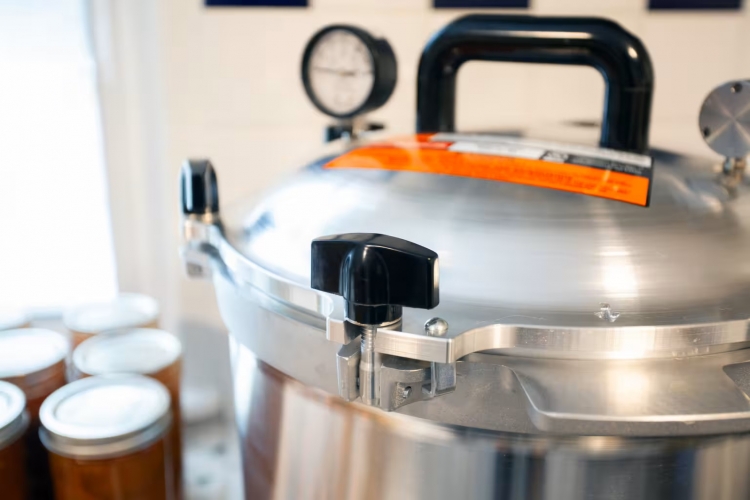Home canned foods safety
Centers for Disease Control and Prevention (CDC)
You can take steps to prevent botulism when preserving food at home. When canning food, always follow safe canning instructions and use the right equipment. If in doubt, throw it out! Never taste food to see if it’s safe.
Foodborne botulism
You cannot see, smell, or taste the toxin that causes botulism. But taking even a small taste of food containing the toxin can be deadly.
Common sources of foodborne botulism are homemade foods that have been improperly canned, preserved, or fermented. Though uncommon, store-bought foods also can be contaminated with botulinum toxin.
Use these tips to help keep you, your family, and your friends safe.
• Use safe canning methods
• Carefully follow instructions - The best way to prevent foodborne botulism is by carefully following instructions for safe home canning. These instructions are in the USDA Complete Guide to Home Canning at nifa.usda.gov/about-nifa/blogs/usdas-complete-guide-home-canning. Use only recipes and cookbooks that follow the steps in the USDA guide. Do not use other recipes, even if you got them from a trusted friend or family member.
• Use the right equipment for the food you’re canning
• Pay close attention when canning low-acid foods. Low-acid foods have a pH higher than 4.6. These foods include all fresh vegetables, figs, meats, poultry, fish, seafood, and some tomatoes. Low-acid foods are the most common sources of botulism linked to home canning. Home-canned vegetables, which are low-acid foods, are the most common cause of botulism outbreaks in the United States. Pressure canning is the only recommended method for canning low-acid foods.
• Do not use a boiling water canner for low-acid foods because it will not protect against botulism.
• Do not use an electric, multi-cooker appliance, even if it has a “canning” or “steam canning” button on the front panel.
Follow these tips when pressure canning:
• Use a recommended pressure canner that holds at least four 1-quart jars sitting upright on the rack.
• Be sure the gauge of the pressure canner is accurate. Many county extension offices will check gauges. Contact the pressure canner manufacturer for other options.
• Clean lid gaskets and other parts according to the manufacturer’s directions.
• Vent the pressure canner before pressurizing and follow recommended cooling steps.
• If your recipe is old, be sure to use current processing times and pressures. Be mindful of the kind of food, the size of jar, and the method of packing food in the jar.
Safely store food
• Can only the amount of food than you will use in 1 year, unless directions for a specific food give other advice.
• Label and date your jars.
• Store them in a clean, cool, dark place.
• For best quality, store between 50°F and 70°F.
• For safety, do not store them above 95°F or near hot pipes, a range, a furnace, in an uninsulated attic, or in direct sunlight.
• Boil home-canned foods before eating
• High temperatures can destroy the toxin that causes botulism.
Boil the following foods in a saucepan before eating them.
• Home-canned tomatoes
• Foods containing home-canned tomatoes
• Any home-canned foods that are or might be low in acid
• At altitudes below 1,000 feet, boil foods for 10 minutes. Add 1 minute for each additional 1,000 feet of elevation.
When in doubt, throw it out!
Do not eat food if you do not know whether safe canning guidelines were followed. Throw it out!
Look for signs of contamination
Any of the following signs indicate that home-canned and store-bought food might be contaminated with toxins or harmful germs:
• The container is leaking, bulging, or swollen
• The container looks damaged, cracked, or abnormal
• The container spurts liquid or foam when opened
• The food is discolored, moldy, or smells bad
• If the container or the food inside have any of these signs of contamination, throw it out!
More ways to prevent botulism:
• Refrigerate any canned or pickled foods after you open them.
• Refrigerate homemade oils made using garlic or herbs.
• Throw away any unused oils made with garlic or herbs after 4 days.
• If you bake potatoes wrapped in aluminum foil, keep them at 140°F or hotter until they are served. Refrigerate them with the foil loosened so they get air
